Phillip George, Ralph Wayment: Mnemonic Notations
Artist(s):
Title:
- Mnemonic Notations
Exhibition:
Creation Year:
- 1996
Category:
Artist Statement:
Mnemonic Notations explores the process of memory inherent in all humans. It responds to the presence of a visitor by altering the form and structure of the environment – in effect creating an entirely new image. The visitor’s choices are remembered by the machine, and images travel to a new layer as the participant navigates through the program. So while the visitor remains in the Mnemonic Notations environment, the interaction between computer and human memory gradually generates new layers.
The interactive structure of Mnemonic Notations reflects the relationship between man and the land. The overall structure of the routes through the work is based on the early Buddhist doctrine of creation by causes, which describes the circular or spiralling process of birth, growth, death, decay, regeneration, and rebirth. The images in the interactive work are no longer separate, individual works, but links in an endless circular or spiralling chain. Four of these chains are positioned parallel to each other, and the participant’s spiralling route through the work is determined by the choices made in navigating through the 12 layers of graphics and animations that are linked by the interactive chains. Each layer has been deconstructed into at least eight node-groups, which are separate destinations within a layer represented by different interfaces, graphics, and animations. While node-groups may look like a single graphic, they are in fact deconstructed into up to 24 individual nodes, each of which is a clickable interactive “hotspot”. Selecting a node triggers an animation, transformation, or relocation to another.
The routes through these maze-like node-groups of graphics and animations are structured so as to mimic and explore the processes of memory. Details of a layer are seen clearly, but the image of a whole layer is so reduced in size as to be unclear. Details of future and past layers are clearly seen, but the totality of the evolution and devolution of the work is an image that is only fully developed in the participant’s memory. There are distractions, unasked-for intrusions, flashes of new perception as images invert or blend into their future and past forms, curiosity about what details will be revealed, frustration as animations and graphics that are meaningful to a participant cannot be revisited without risking moving on to another layer, and a gradual understanding and acceptance of the totality of the work.
The work is paced to reflect genesis, growth, decay, memory, and imagination rather than technology. It is designed to calm and illuminate rather than excite.
All Works by the Artist(s) in This Archive:
- Phillip George
-
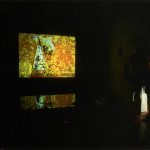
Mnemonic Notations
[SIGGRAPH 1995] -

Tangent @ 23 Fire
[SIGGRAPH 1997] -

Tangent @ 23 X
[SIGGRAPH 1997] -
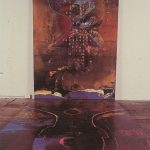
Headlands Mnenmonic Notations
[SIGGRAPH 1992] -
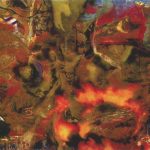
Mnemonic Notations
[SIGGRAPH 1996] -
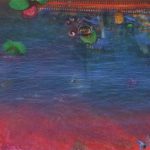
mnemonicon 23
[SIGGRAPH 2006] -

Moving Towards the Event Horizon
[SIGGRAPH 1998] -

Poetics of Migration #1 & #2
[SIGGRAPH 2004] -
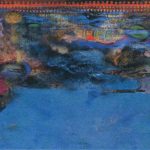
Waterworks
[SIGGRAPH 2001] -
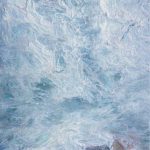
Whitewater
[SIGGRAPH 2001] - Ralph Wayment





